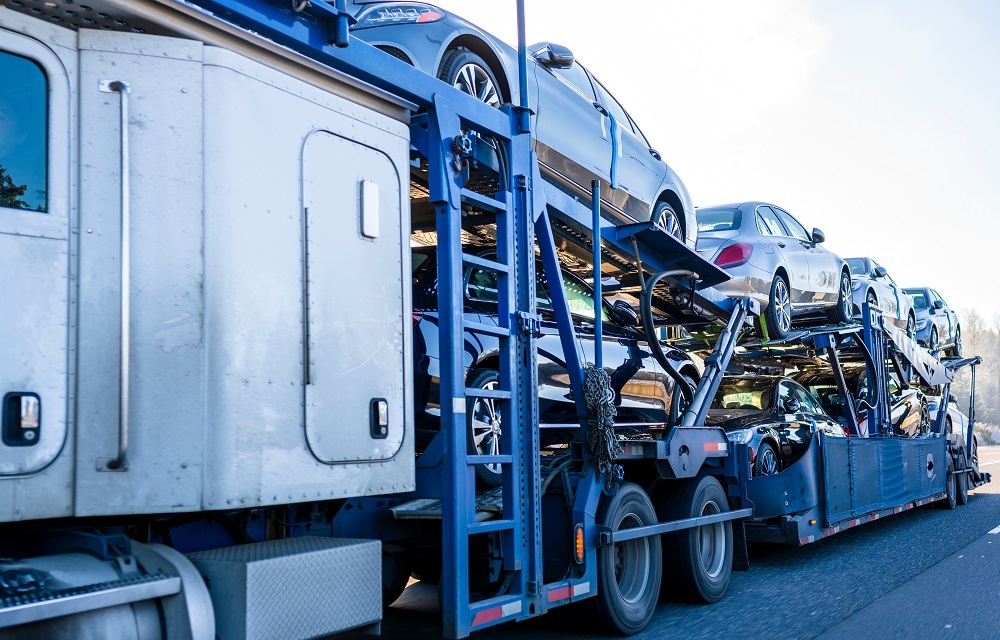There are no hard and fast rules when it comes to travelling across Europe. It all comes down to one simple question -- what kind of experience do you want to have?
You can go the more traditional route and rely on Europe’s world-renowned public transportation systems. They’re good enough that most urban Europeans don't have to learn to drive!
Or, you can experience Europe in a much more intimate fashion, driving a car to get around.
While renting a car may seem like the more convenient option in this situation, having your vehicle with you has its fair share of benefits.
Having your car with you eliminates the hassle of finding a rental car service. Also, you won't have to worry about what happens to your car if you leave back home.
Moreover, if you’re like many of us who share a special bond with their car, sharing your European adventure with your vehicle elevates the whole experience.
Lastly, you'll be driving something you're familiar and comfortable with -- which is always a plus when you're exploring new roads. Driving a rental car can be stressful and confusing, especially during international travel.
With all that said, shipping a car to Europe for vacation comes with a unique set of challenges.
It's not as simple and as cheap as, say, shipping a car from California to New York, and the process can be overwhelming if it's your first time.
So before you pack that travel backpack and dream about the perfect European vacation, make sure to read our list of 5 pro tips to ship a car to Europe for vacation!
Find out if your vehicle is eligible to be driven in your destination country
You shouldn't have any issues with a fairly new car that's been maintained and serviced regularly. However, if you're considering shipping your father's old pickup truck, you have to check first with the customs office in your destination country.
Since most countries within the EU are concerned about engine emissions, you might not be able to ship your personal car if it's above a certain age, or if it simply doesn't meet European emission standards.
That said, certain countries make exceptions for cars that qualify as antiques.
So fret not, you can still take your old Mustang on a journey to the Swiss Alps. And you can still drive a classic Corvette across the Italian countryside and feel like a race-car driver -- provided you have all the necessary documents!
Determine your preferred car shipping method
In general, the cost of shipping your vehicle to your destination country will depend on a number of things: the size of your vehicle, the time of year, the shipping distance, your chosen car shipping company, and most importantly, the type of shipping method you choose.
There are three ways you can ship your car to Europe. You can either use a roll-on, roll-off service (or RO-RO) a shared container, or a single container to ship your car.
Obviously, each vehicle shipping method has its own pros and cons.
RO-RO Method
The best part about a roll-on, roll-off service is its simplicity. You can just drive your vehicle to the port of your choosing, leave it in the RO-RO ship, and claim it at the port of your country of destination.
This car shipping method is the cheapest option among the three, and you can get your vehicle within 3-4 weeks. The only problem with the RO-RO car transport method is that you can't put anything inside your vehicle. Furthermore, RO-RO carriers call only certain ports -- limiting your shipping options.
Obviously, this is ideal for tourists who don't need to bring much for their European vacation.
Shared Container
The best part about using a shared container for shipping your car is that you can put all your stuff in your vehicle.
That said, a major drawback to this method is that it takes the longest. You can generally expect to claim your car at the port in around 4-8 weeks.
A shared container is a cost-effective way to ship your vehicle. Yet, with other shipments onboard, there's a fair deal of waiting involved.
If you're not in a hurry to take a European road trip, and if you plan on doing some backpacking and bringing a lot of gear with you, this method may be ideal for you.
Single Container
While this car shipping method may be the priciest among the three methods, using a single container for shipping your vehicle is great if money is not an issue, if you have to ship other stuff along with your vehicle and, if you're not keen on waiting for more than 2 weeks to claim your vehicle.
Find the right overseas auto shipping company
If you want the process of shipping your car to Europe to go as smoothly as possible, researching and finding the right international car shipping company is key.
Obviously, you'll want a company that offers services that fit your budget; but more importantly, you'll want a reputable company that's licensed by the Federal Maritime Commission.
The ideal company should walk you through the process of shipping your vehicle, from the shipping routes they'll take, the import laws you'll have to abide by ( dependent on the country you're shipping your car to), and all the documents and certifications needed to ship your car overseas.
Lastly, it is important to ask the company just how much insurance coverage you’re provided with. If they don’t cover the entire market value of your vehicle, consider asking them if you can purchase additional auto insurance coverage.
Gather the needed documents
The documents you’ll need will depend on the country you're going to (your shipping company will assist you with this). As a general rule, it's best to think about your vehicle like it’s a tourist itself -- it needs proper documentation to travel.
When shipping your car overseas, you'll generally need these documents:
- A U.S. Customs & Border Protection Vehicle Export Cover Sheet
- The original registration and title
- A photocopy of your passport
- Notarized bill of sale
- Bill of lading
- Completed DOT forms to show safety compliance
- Completed EPA forms to show emissions compliance
- International Driver’s Permit
There might be other documents needed depending on the type of car you're shipping as well as the laws in your country of destination. To avoid any hiccups, make sure to consult the customs office in your destination country.
Moreover, make sure that your vehicle is in tip-top condition, and make your own vehicle inspection report before handing your vehicle over for shipping.
Familiarize yourself with the driving laws in your destination country
Equally important to securing proper documentation is having proper knowledge of driving laws in your destination country and Europe as a whole.
And no, it's not just about knowing which lane to drive in.
You have to observe proper driving etiquette at all times, and observe proper speeds depending on the road you're on.
As a final note, it's best to plan your routes ahead of time and familiarize yourself with the expected driving conditions during your visit.



